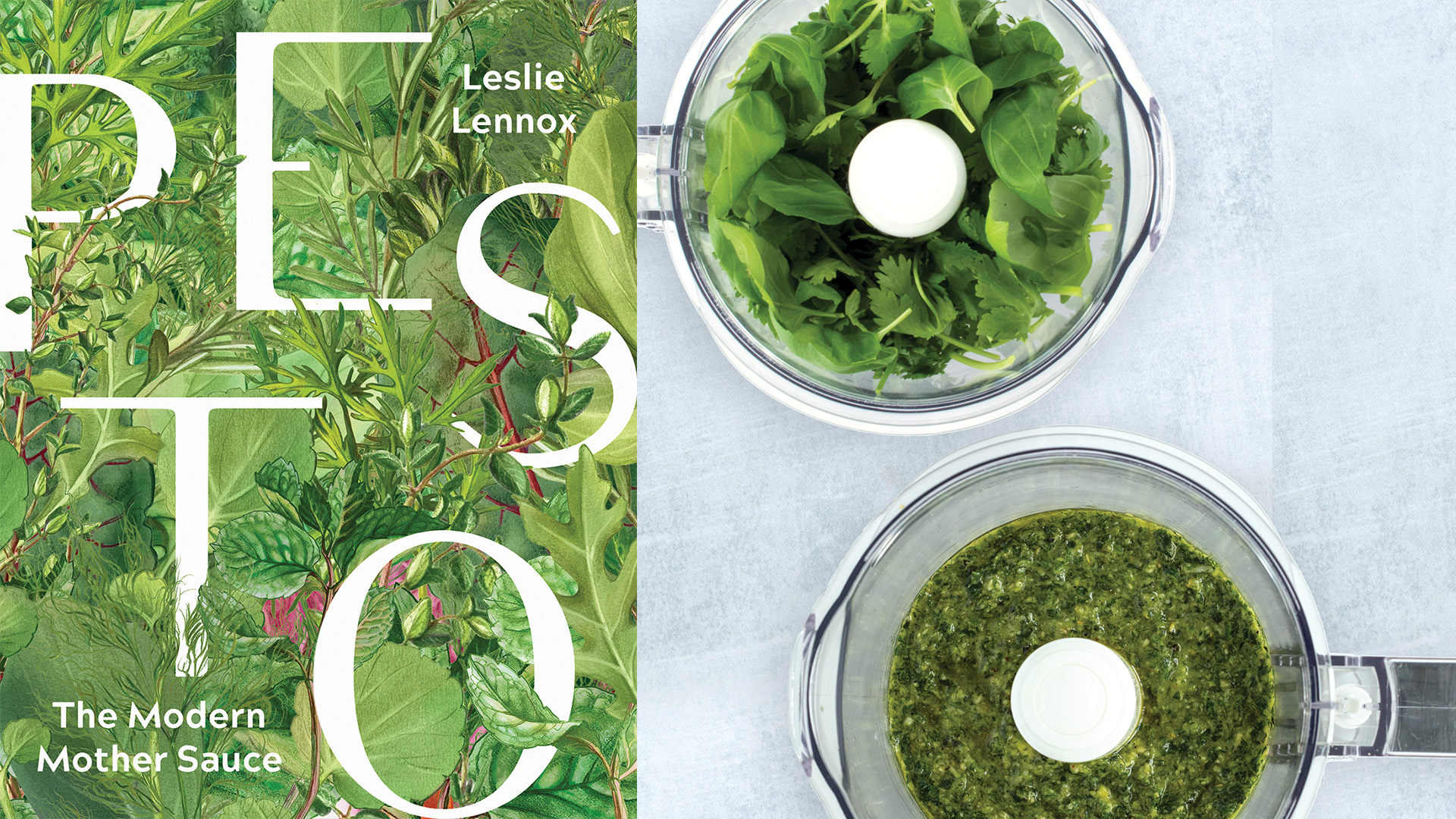I Learned 3 Valuable Lessons From This New Pesto Cookbook
You may raise an eyebrow at single-subject cookbooks: "Am I really going to make enough cake pops to justify an entire book on the subject?" (I owned the cake pop cookbook. I made them once and donated the book thereafter.)
But the best single-subject cookbooks expand your understanding of a dish or ingredient you might have previously considered narrow. Such was the case with Pesto: The Modern Mother Sauce, a new cookbook I've found surprisingly versatile. Its pages are already olive oil-smudged from many consultations this summer.
I came to the book as most of us would, thinking pesto is a basil-cheese-oil-pine-nut combo that's tasty on pasta and pizza and caprese salads, end scene. Author Leslie Lennox argues that pesto is a mother sauce in the tradition of hollandaise and béchamel, "a base for a wealth of other sauces and dishes." Pesto is not the end product of a recipe, it's the foundation for many more. Having read and cooked my way across this book, I'll share my CliffsNotes.
You can use cheaper nuts.
Fam, pine nuts are expensive. I've neglected to look at the prices in the bulk section of the grocery store, only to do a spit-take at the register. This book encouraged me to use up nuts I already had in my pantry: almonds, candied pecans (try them in a spinach pesto), pistachios (try them with arugula), even peanuts in a Thai-inspired pesto.
Pesto can flavor other sauces.
Pesto is not just a final product. It can become a component of other sauces and dishes: pesto mayonnaise, pesto buttermilk dressing, pesto vinaigrette, pesto marinara sauce. When I have just a little extra pesto left in my jar, I stir it around with some mayo and lemon juice to make a sandwich spread or shake it up with oil and vinegar to make a salad dressing. Also, a spoonful of pesto added into a regular meatball recipe is tops. Try it in omelets, too. An open jar of pesto in my fridge never languishes anymore.
Pesto can lean Mexican, or Thai, or Japanese.
This was perhaps the greatest revelation of all: Duh, why am I not using pesto in Thai noodles? Or in shakshuka? Or gazpacho? There's even a pesto ramen bowl recipe in the book I have yet to try. Because practically any greens can become pesto, it becomes a much more adaptable sauce than I was giving it credit for. Now any time a dinner needs a fresh, herbaceous lift, there's a jar in my fridge for that.
